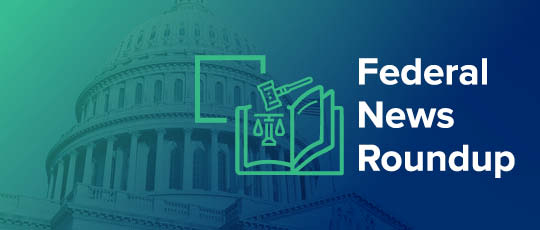For WorldatWork Members
- Lead with Well-Being in HDHP and HSA Communications, Workspan Daily Plus+ article
- Wellness Woes: Why Aren’t Employees Using Your Benefits? Workspan Daily Plus+ article
- How TR Pros Can Help Workers Financially Prepare for Retirement, Workspan Daily Plus+ article
- Total Rewards Inventory of Programs & Practices, research
For Everyone
- Do HSAs and FSAs Actually Save Employees Money? Workspan Daily article
- Report: HSAs May Encourage More Efficient Health Spending, Workspan Daily article
- Employers: Urge Workers to Consider HSAs as a Retirement Tool, Workspan Daily article
- Employers Say They Offer ‘Modern’ Benefits; Workers See It Differently, Workspan Daily article
- Benefit Checkup: What’s the Current Health and Utilization of HDHPs? Workspan Daily article
Health savings accounts (HSAs) have become a staple total rewards offering over the last decade, but a new study by the Employee Benefit Research Institute (EBRI) showed employees are still leaving the full value of these accounts on the table.
The June 12 EBRI report pulled data from 14.5 million accountholders, containing more than $48 billion in total assets — roughly 40% of the entire HSA universe. The analysis revealed:
- Low balances. End-of-year balances increased in 2023 (the most recent analysis period) to $4,747 but are still modest compared with average out-of-pocket maximums for HSA-eligible health plans ($8,300 for individual coverage in 2025, $16,600 for family coverage)
- Low contributions. Relative to 2022, average HSA contributions increased in 2023. However, after adjusting for inflation, both employer and employee contributions were higher in the 2010s. Also, notably, the average combined HSA contribution was $760 less than the statutory maximum contribution for individuals and $4,660 less than the statutory maximum contribution for accountholders with family coverage.
- High withdrawals. More than half of accountholders withdrew funds, and the average distribution rose to $1,801.
- Low investment. Only 15% of accountholders invested in assets other than cash.
EBRI found that, essentially, employees use HSAs as specialized checking accounts rather than investment accounts, and in doing so, miss out on the triple tax advantage available if they maximize contributions, minimize withdrawals and invest their balances.
“The good news is that, here we are 20-plus years after HSAs launched, and they’ve become pretty standard. They’re a typical plan offering from most employers of all sizes — not just large or small companies, or in certain industries,” said Alexander Domaszewicz, a principal and healthcare consultant at advisory firm Mercer. “If we live long enough, we’ll have healthcare expenses, and we want to be prepared for that. But while awareness and visibility of HSAs have grown, they’re still intimidating to folks.”
Fuller Utilization Comes with Age
The average worker contribution in 2023 was $2,075 — but among workers under the age of 25, the average worker contribution was just $658, compared to $2,564 for workers aged 45 to 54, according to Jake Spiegel, a senior research associate at EBRI.
“As workers age, they tend to earn more and are better equipped to divert additional savings to their HSAs,” he said. “Additionally, they face higher healthcare expenses than younger workers, which may encourage them to use their HSAs as a pass-through spending vehicle so they can pay for their healthcare expenses on a tax-advantaged basis.”
Withdrawals also increase with age. The 2023 average was $804 for workers under age 25, compared to $2,557 for workers aged 45 to 54.
The same trend plays out for investments. Overall, 15% of accountholders had invested at least some portion of their HSA assets, but that percentage is lower for younger workers (4% for those under age 25) and higher for older workers (18% for those 45 to 54), said Spiegel.
Domaszewicz noted that an individual’s comfort level with HSAs increases over time. Also, with more than a third of individuals enrolled in HSA-available employer-sponsored health plans, according to Mercer data, those accountholders should consider asking their colleagues how they are utilizing theirs.
Barriers to Overcome
There are several reasons employees may not max out and invest HSA contributions, Spiegel said. These include:
- HSA providers set eligibility thresholds to invest assets.
- Accountholders want to save enough to cover their deductible or out-of-pocket maximum before investing.
- Cash flow constraints keep people from paying medical expenses out-of-pocket while investing their HSA assets.
- Confusion exists between HSAs and flexible spending accounts (FSAs), or not realizing HSA assets even can be invested.
“We find that one of the strongest associations with the propensity to invest is the length of time an accountholder has had their HSA,” Spiegel said. “Perhaps folks just need a few years of experience with a high-deductible health plan and an HSA to figure out the role it plays in their personal finances.”
But HSAs are a valuable wealth-building tool, he asserted.
“Just by doing some back-of-the-envelope calculations, if a worker contributes the maximum for 40 years, earns a 7.5% real return and doesn’t take any withdrawals, they can accumulate $1 million by the time they retire,” Spiegel said. “Not everyone can contribute the maximum or avoid taking withdrawals for 40 years, of course. But having a significant accumulation in your HSA by the time you retire is incredibly valuable, as healthcare expenses in retirement can be substantial.”
Tactics to Engage Employees
Employer contributions have a significant impact on employee utilization of HSAs, Spiegel said. Accountholders who work for an organization that offers an employer contribution have higher average total contributions and average balances, and are more likely to invest their HSA assets.
“Employers that offer a contribution might also be doing a better job informing workers of the benefits HSAs offer, offering webinars or seminars and other educational materials, or conducting outreach,” he said. “But it’s pretty clear in the data that accountholders who receive an employer contribution are taking fuller advantage of the tax benefits that HSAs offer.”
Domaszewicz also shared several ways total rewards professionals can get creative to encourage better HSA utilization by employees:
- Consider larger contributions to HSAs for employees below a certain income threshold; or, have the same max contribution per employee but offer a 2:1 match for employees below a certain income threshold.
- Take cues from 401(k) policies, such as default contributions that automatically increase with salary bumps.
- Offer well-being incentives via deposits in HSA accounts.
- Provide plan comparison tools, digital resource repositories, etc.
- Launch an HR-monitored Slack channel for employees to share their own HSA experiences, tips and tricks.
More than anything else, don’t assume employees understand HSAs because you conducted training when you first offered them.
“Whatever your turnover is, that’s the number of folks who need to understand, ‘Why should I select this plan, and what are the advantages?’” Domaszewicz said. “You have to build up the financial courage of your workforce. The best employers see this as a continuous process. There’s no one secret sauce — doing all of them over time is the secret sauce.”
Editor’s Note: Additional Content
For more information and resources related to this article, see the pages below, which offer quick access to all WorldatWork content on these topics:
#1 Total Rewards & Comp Newsletter
Subscribe to Workspan Weekly and always get the latest news on compensation and Total Rewards delivered directly to you. Never miss another update on the newest regulations, court decisions, state laws and trends in the field.








